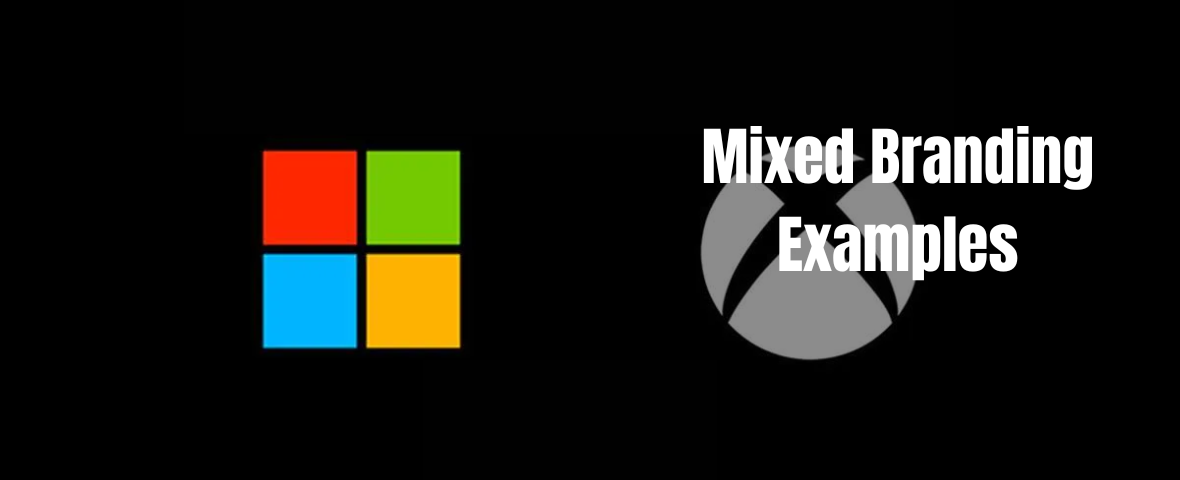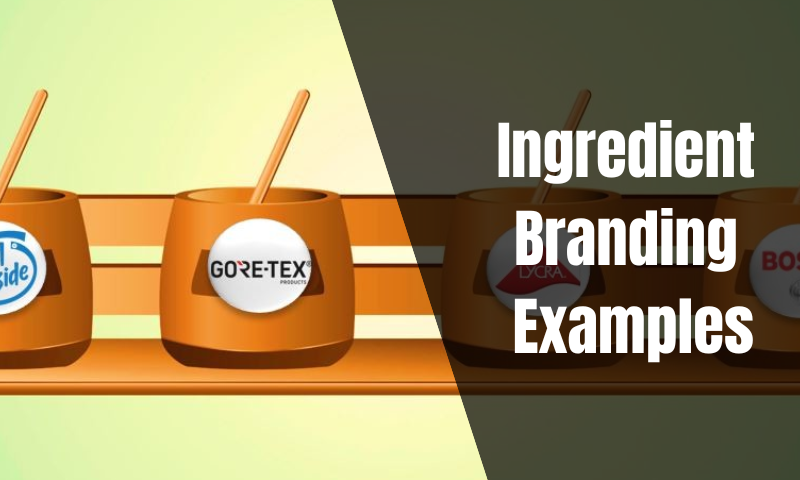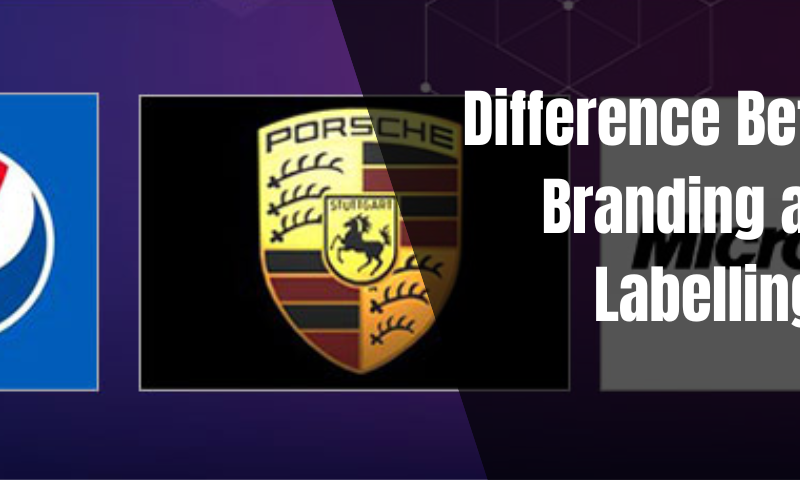
6 Inspiring Mixed Branding Examples for Your Business Success
A marketing approach where a company simultaneously promotes multiple brands within the same product category is called mixed branding. Businesses can diversify their product offerings and appeal to a wider range of consumer preferences using this tactic.
In mixed branding, companies usually create a portfolio of brands with distinct positioning and identities catering to various market segments.
It has been observed that by implementing mixed branding, companies can successfully target different groups of consumers. Successful mixed branding requires clear differentiation between each brand within the portfolio to prevent them from competing with each other.
This strategy helps expand the company’s market reach and captures diverse customer demographics. It also strengthens its position in a competitive marketplace.
Companies usually implement mixed branding strategies for several key reasons. Firstly, it makes it easier for them to reach a wider and more diverse consumer base. By offering multiple brands within the same product category, businesses can cater to various customer preferences, price points, and demographics.
This not only helps in maximizing market share but also reduces the risk associated with relying on a single brand, as fluctuations in one brand’s performance can be offset by the success of others. Also, mixed branding allows companies to effectively segment the market.
Different brands within their portfolio can be created according to specific market niches This is important in industries with varied consumer preferences. This segmentation helps companies create targeted marketing strategies, enhance customer loyalty, and respond more flexibly to changing market dynamics. Mixed branding is a strategic approach that enables companies to adapt to market variations, diversify their product offerings, and establish a stronger foothold in the industry.
Advantages of Mixed Branding
While we are discussing the reasons for companies to use mixed branding, it is important to look at the various benefits that mixed branding brings to companies which are looking for market expansion, creating market presence and catering to diverse consumer preferences:
Diverse customer base: Among the other primary advantages of mixed branding, this one is noteworthy. Through mixed branding, brands can acquire the ability to reach a wider range of consumers.
When companies offer multiple brands within the same product category, they can attract customers with different tastes, budgets, and preferences. This variation can help stabilize revenue streams and reduce dependency on a single market segment.
Market segmentation: It is important for companies to segment the market more effectively. Mixed marketing helps them do that. Different brands within the portfolio can be created for specific market niches, making it easier to address the unique needs of various customer segments.
Risk mitigation: A company is more susceptible to market fluctuations and changes in consumer preferences when it relies on a single brand. However, mixed branding spreads the risk, so if one brand faces challenges or its popularity decreases, other brands in the portfolio can compensate, thus reducing the overall risk to the company.
Market share maximized: Companies can capture a larger share of the market by offering brands at different price points and quality levels. This method allows them to appeal to consumers depending on their income levels. Hence, this approach ensures that more potential customers can afford and choose their products.
Brand synergy: Brands within a mixed branding portfolio can often benefit from shared resources and infrastructure, such as manufacturing facilities, distribution networks, and marketing efforts. This synergy can lead to cost savings, improved efficiency, and a stronger competitive position in the market.
Brand image and positioning: Companies can position each brand within the portfolio strategically. This approach caters to different mindsets of customers and market segments. This enables companies to project various images, such as luxury, affordability, innovation, or tradition, and connect with a broader range of consumers.
Market expansion: Mixed branding allows companies to expand into new markets or product categories under established brand names. This can save the time and effort required to build a brand from scratch and leverage the reputation and customer trust associated with existing brands.
Brand loyalty: Brand loyalty among consumers who prefer a specific brand within the portfolio is something companies can always foster. This leads to repeat purchases and long-term customer relationships, strengthening the overall brand equity of the company.
Overall, mixed branding is an important strategy that enables companies to diversify their product offerings, mitigate risks, and appeal to a wider array of consumers. It allows for flexibility in adapting to market changes and can result in increased market share and profitability.
Disadvantage of Mixed Branding
Mixed branding offers various advantages which can be extremely helpful for businesses. However, it also comes with its share of disadvantages that companies need to keep in mind, to understand the concept clearly. Let’s have a look at a few of those cons:
Brand dilution: Dilution of brand is an issue that often comes up while managing multiple brands within the same product category. It can create confusion among customers about the differences between the brands. The individual identities of each brand can become less clear to consumers. Hence, this can reduce brand equity and customer loyalty.
Complex operation: It can be operationally complex and expensive to run multiple brands. This is because companies need to allocate resources for product development, marketing, and distribution for each brand, which therefore can strain the organization’s capacity and resources.
Cannibalization: Cannibalization in marketing refers to the loss in sales as a result of a company’s introduction of a new product. This new product tends to displace one of its own older products. Therefore, the cannibalization of existing products leads to no increase in the company’s market share despite sales growth for the new product. In multiple branding, when several brands within the same company compete for the same customer base, there arises the risk of cannibalization. Customers who might have purchased one brand may switch to another brand within the portfolio, resulting in lost sales and revenue for the company.
Marketing Challenges: It can be challenging to create and implement marketing strategies for multiple brands. Therefore, it is important for companies to ensure that each brand is promoted effectively and there is consistent messaging which are tailored to the brand’s target market.
Consumer confusion: As mentioned before, the presence of multiple brands within the same product category can confuse consumers. They might not clearly understand the differences between the brands, leading to difficulties in decision-making. This can potentially push them toward competitors whose brand offerings are simpler to comprehend.
Resource allocation: In mixed branding, companies may sometimes struggle with the allocation of resources among their brands. It can be challenging to determine how to distribute budgets, talent, and other resources across the different brands to enhance performance.
Maintenance costs: Maintenance is required by each brand within a mixed branding strategy. This maintenance includes updating products, branding, and marketing efforts which can lead to higher ongoing costs for the company.
Inconsistent Quality: Maintaining consistent quality across all brands can be challenging, especially if a company tries to cater to both premium and budget markets. Inconsistent quality can damage brand reputation and customer trust.
Therefore, while mixed branding can be an important strategy, it definitely requires careful management and consideration of these disadvantages. The potential benefits against these challenges should be weighed by companies to determine if mixed branding aligns with their business objectives and resources.
Mixed Branding Examples
To understand mixed branding better, we are now going to dive into examples of mixed branding. These brands have their game on point and definitely deserve a place on the list. Let’s look at a few of those examples in detail:
1. Microsoft and Xbox
Microsoft, a tech giant, also owns Xbox, which is a well-known brand for gaming consoles and related products. While Microsoft primarily focuses on software and computer technology, Xbox caters to the gaming community, showcasing a mixed branding strategy.
2. Toyota and Lexus
Lexus is a brand that offers luxury vehicles. It is owned by Toyota, which is a leading automaker. This mixed branding strategy allows Toyota to capture a broader market by appealing to both mainstream consumers and those seeking premium, high-end automobiles.
3. Virgin and Virgin Active
Led by Richard Branson, The Virgin Group, includes a variety of businesses. These businesses include Virgin Active which is a chain of health and fitness clubs. Virgin’s mixed branding approach helps the brand to extend from airlines and move to telecommunications, thus showing its versatile side.
4. Nike and Jordan
Nike, a global sportswear and athletic footwear brand owns Jordan Brand. Jordan Brand is a subsidiary of Nike and is a separate brand dedicated to basketball sneakers and apparel. This mixed branding strategy enables Nike to address and cater to the specific demands of the basketball market.
5. Apple and Beats
Apple, as we all know is renowned for its technology products like iPhones and MacBooks. It acquired Beats by Dre which is a brand known for premium headphones and audio equipment. The acquisition as a result allowed Apple to expand into the audio accessory market.
6. Google and Android
Google is a technology company that developed the Android operating system for smartphones and tablets. Android is used by various device manufacturers, allowing Google to diversify its branding strategy beyond its core search and advertising business.
These examples show how companies can employ mixed branding to address diverse market sections and consumer preferences while using their established brand presence to their advantage.
Mixed Branding Strategy
After weighing every aspect of mixed branding, it is necessary to chalk out a plan for any form of marketing. Hence, while trying to effectively use mixed branding, marketers and brands require a thoughtful and strategic approach. Here are some fundamental strategies to ensure the successful execution of the marketing efforts:
Choose complimentary brands: When creating multiple brands within the same product category, it is essential to select brands that complement each other. It should not be selected to compete. Each brand’s positioning should be unique. Moreover, it should target different market segments to avoid cannibalization of sales. For example, one brand can focus on affordability, while another emphasizes premium quality.
Define target audiences: Clearly defining the target audience for each brand within the portfolio can be helpful. Understanding their demographics, preferences, and needs helps in crafting tailored marketing strategies and messages that reverberate with each brand’s specific customer base.
Be consistent: Consistency is the key to any marketing effort; mixed branding is no different. While each brand should have its distinct identity, it’s important to maintain consistency in branding elements like logos, colour schemes, and visual aesthetics where appropriate. This consistency strengthens the association between the brands and the parent company.
Communicate the value proposition: Brands should clearly communicate the unique value proposition of each brand to the consumers. This can be done by highlighting the factors that set each brand apart and why customers should choose one. Effective marketing and advertising should reflect these value propositions clearly.
Avoid brand confusion: One of the biggest concerns in mixed branding is confusion among customers. It is important to ensure that customers don’t get confused about the differences between the brands. It’s crucial to create clear messaging and maintain a degree of separation between the brands. This might include distinct product lines, pricing structures, or advertising channels.
Allocate resources wisely: Allocating resources strategically to support each brand is also another very important point to remember. Assessing the needs of each brand within the portfolio and allocating budgets, talent, and marketing efforts accordingly can be largely helpful.
Not to forget, resource allocation should be aligned with the potential of each brand to maximize success.
Regular performance evaluation: Brands need to continuously monitor the performance of each brand and make alterations as necessary. If it is seen that one brand is underperforming constantly or if there’s a significant overlap in customer bases, it is best to consider repositioning or consolidating brands to improve the mixed branding strategy.
Plan for Growth and Adaptation: As market dynamics evolve, be prepared to adapt your mixed branding strategy. This might involve introducing new brands, expanding into new markets, or discontinuing brands that no longer align with your business objectives.
Overall, as far as strategies are concerned, effective mixed branding involves careful planning, differentiation, and consistent communication. It is a dynamic strategy that should evolve with changing market conditions and consumer preferences. This approach when executed well, can be a powerful tool for companies to reach diverse customer segments and maximize their market share.
Today mixed branding in advertising agencies across cities in India, including Gurgaon and Delhi, has become increasingly prominent. These agencies often manage diverse client bases with varying needs and expectations. By adopting a mixed branding approach, they can effectively cater to clients from various industries and market segments, offering tailored solutions that resonate with the specific target audiences.
For instance, an advertising agency in Gurgaon may have one brand that specializes in digital marketing for tech startups and another brand focused on traditional media advertising for established businesses. Similarly, in Delhi, a branding agency may have a separate brand to serve government organizations and another to work with fashion and lifestyle brands. This mixed branding strategy allows agencies to showcase their versatility, expertise, and capacity to address the unique demands of different clients, ultimately strengthening their position in the competitive advertising landscape across India.
Conclusion
Mixed branding is a versatile marketing strategy that allows companies to diversify their product offerings and target a wide range of customer segments. By creating a portfolio of brands within the same product category, companies can maximize market share, mitigate risks, and adapt to evolving consumer preferences and market dynamics.
However, it’s essential to employ mixed branding effectively by carefully selecting complementary brands, defining clear target audiences, maintaining consistency in branding, and communicating the unique value propositions of each brand.
While mixed branding offers numerous benefits, such as a diversified customer base and reduced risk, it also comes with potential drawbacks, including brand dilution and cannibalization. Therefore, companies must continuously evaluate the performance of each brand and be ready to adapt their strategy to remain competitive and relevant in an ever-changing market. When executed with strategic foresight and a focus on customer needs, mixed branding can be a powerful tool to enhance a company’s market presence and overall success.
Also, explore the Difference Between Branding and Labelling.



